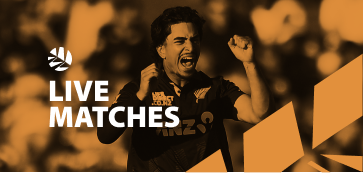New Zealand and the West Indies will both raise concerns about the umpiring referral trial to the International Cricket Council.
New Zealand want the television technology available to umpires to be expanded after wicketkeepet Brendon McCullum was given out caught behind by the on field umpire Rudi Koertzen and third umpire Mark Benson despite replays detecting no contact between bat and ball.
McCullum's departure for 19 ended New Zealand's runchase of 312 for the win, 92 short when the second and final test ended nine overs early.
New Zealand captain Daniel Vettori, who expressed reservations about the system after the first drawn test in Dunedin last week, suggested technology to detect edges -- `snicko' and the `hot spot' -- should be made available to prevent a repeat of McCullum's dismissal.
"It was clear he didn't hit it," Vettori said of the McCullum decision.
"If you're going to go upstairs you should give the umpires as much technology as they can have.
"Hot spot seems to be the best one I've seen in my time -- you couple that with snicko and the naked eye and you'd think you'd get the decisions right 100 per cent of the time."
West Indies coach John Dyson agreed: "I think if the feeling about technology like `snicko' is very good that should be another tool given to the umpires to make the decisions.
"Sometimes the eyes and the cameras don't pick everything up.
"The view the umpire gets is also inconsistent with the view that's shown on television and the ground, they get different a pitch map (for leg before wicket decisions) and hawk eye view to what we see on TV."
There were seven referrals in the first test and 12 in the second, including seven on the final afternoon as the West Indies tried to ensure New Zealand would not threaten the winning target.
McCullum was the prime target for the tourists -- he survived challenges to an ambitious leg before wicket appeal on seven and another caught behind call on nine where Benson correctly decided there was no contact.
The West Indies also had a rejected leg before wicket decision against Ross Taylor referred unsuccessfully.
Vettori felt three unsuccessful challenges available per innings allowed captains to try their luck, as he did when counterpart Chris Gayle survived an optimistic leg before wicket appeal 55 runs into his game-saving 197.
"I think you saw Chris (Gayle) and myself almost taking a chance some of the time. We took a chance with Chris because it was such an important wicket -- I don't think that's why the referral system was brought in," he said.
"If we're looking to rid the game of the obvious wrong decisions then it has to be brought back to one (challenge) in my opinion.
"If we caught up in the 50-50s (decisions), that takes the power out of the umpires' hands.
"Everyone involved in the game still wants that human element."
Dyson said two challenges was a fairer number.
"With three there's a bit of a feeling there `Oh well we'll give it a go because we've got three'."
NZPA


















